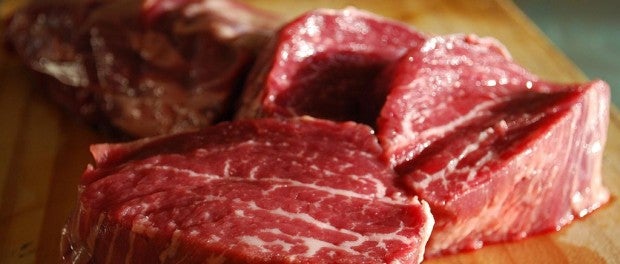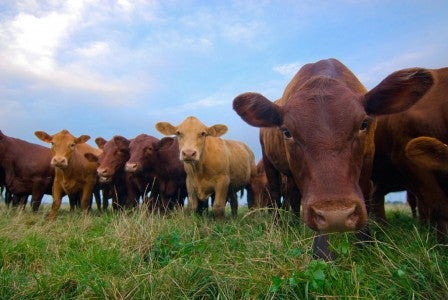The Benefits of Going with Grass Fed

If you pay attention to meat labels, one you are seeing with increasing frequency is ‘grass fed.’ In recent years as the trend leaned towards a healthier, cleaner, more organic form of eating, people have started to pay attention to from where their food came instead of eating blindly. As a result, farmers have taken notice as well, as it is up to the farm to in a sense cater to that demand. Aside from meeting such demands, however, we as small or beginning farmers have choices to make in regards to the types of meats we feed our families. Grass fed very well could, or should, be one of them.
There are several different meat animals that can be raised on grass, such as cattle, chickens, goats, rabbits, and sheep. The push behind doing so lies in the resulting body chemistry of those animals and how it in turn relates to use when we consume them. For example, animals fed on a diet of grass have been shown to have more beta carotene, conjugated linoleic acid (CLA), omega-3 fatty acids, and vitamin E. Each of these act in different ways, but their benefits include lower incidence of cancer and providing anti-inflammatory properties. Additionally, grass fed meat has a lower concentration of acid-resistant E. coli, a pesky bug that thrives in the human gut and causes food poisoning.
If the health benefits are not enough to convince individuals to try grass fed, another factor is the better taste of animals fed on such a diet. Meat is also leaner and tenderer often with just enough marbling to make it ideal. This means meat that is healthier for you from an animal dining on food that is healthier for them. It truly amounts to fewer health problems all around as we all feast upon what was intended rather than commercial products that may have been formulated to increase growth at the price of sacrificing health.
Although grass fed animals will likely have to be supplemented with hay during the winter depending on your climate, the cost of cutting and baling or buying hay is still typically far less than purchasing grain all year. Plus, you know exactly what your animals are eating. You see the grass grow from the earth and watch as these animals consume it whereas you have no insight to what goes into a grain bag. This is especially concerning with incidences of listeria contamination and metal shavings in feeds on the rise.
Certainly each of us as farmers have developed our own opinions as to what works best both on our farm and for the animals we raise. However, there is something to be said for the pendulum swinging back to the days of old in terms of animal feeding. Decades ago we did not have grains that were rich in this additive or that one. Animal feed did not contain things with names we cannot pronounce which promise to amplifying growth at unnatural rates. After years of tampering with the way nature intended, finally the pendulum is swinging back to where it all began, that being animals fed on grass. Perhaps it is time to return to the glory days of unenhanced, environmentally sustainable meat for the health of ourselves and the farm animals we eat, making the dinner table a healthier place to be.








 Your Privacy Choices
Your Privacy Choices
Leave a comment